Can you caption a nose
Before today's science I need to slip in a few more images from Bird Island. I am still in awe of the wildlife. We were too early in the season for chicks, but managed to see Gentoo nest building behavior and breeding. There were also many vocalizations, most indicating a distaste for our presence.
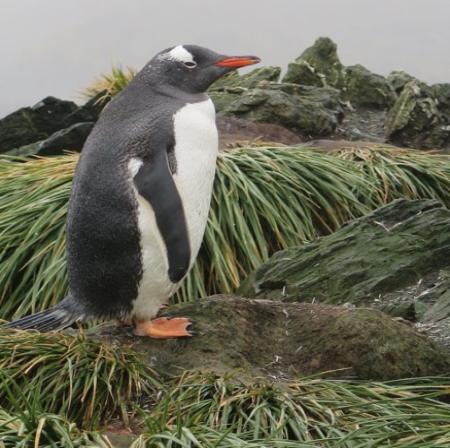
I did see a few southern elephant seals lounging on the beach. We were discouraged from getting too close, and at over 4,500Kg, I stayed a respectful distance. This is also the start of breeding season and these big guys can move quite quickly and are very territorial towards their harems.
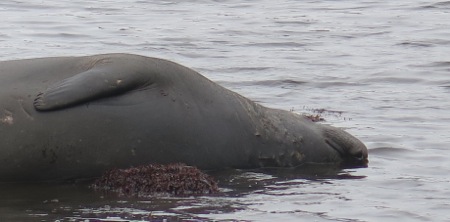
Now for a quick personal note. As many of you know I teach eighth grade science with diversity of living things as one of my most favorite subjects. I collect bones and dead samples to use with students. We construct dichotomous keys and what better way to understand a species than to look at the structure of the body. I can't bring a mountain lion into my class, but I can bring in its vertebra or a skull. I had no idea that with no terrestrial predators on Bird Island, that EVERYWHERE I looked there were skulls, vertebrae, wings, even the teeth of these amazing creatures and... wait for it. I was not allowed to take anything. I spent way too much time looking at the ground taking pictures of bones.

I also wanted to bring our expedition flags to Bird Island. This has been an amazing adventure for me and I have loved thinking of all the people from around the world and the United States following along looking for their individual flags.
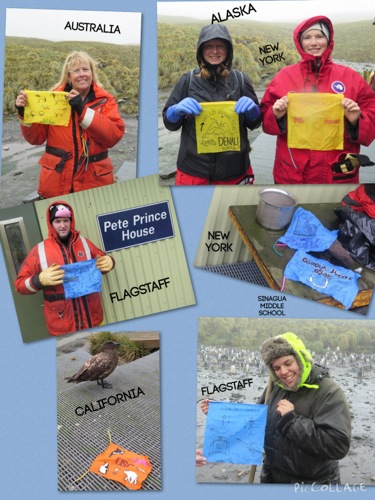
Now on the the topic at hand, the science of the day. The morning started with the fourth dredge and the afternoon ended with the seismic and recording data. As we settle into a pattern of collecting data from the streamer, everyone is having a moment to breathe, catch their breath, and plan out the last ten days of our research expedition.
This transition has allowed me a moment to interview Graham Parker, our resident Kiwi. We have been so fortunate during this cruise to have an ecologist from New Zealand who is very familiar with South Georgia.

Graham works on New Zealand with his brother and wife for their own business "Parker Conservation" which specializes in translocation and restoration ecology. Graham is an ecologist with an M.S. in wildlife management and has an amazing career. Imagine being paid to travel to isolated islands and collecting data on threatened and endangered species. Graham will spend months in the field on an assignment, in tents, small shelters, and at times alone counting, recording, and documenting specific aspects of species.
For our research cruise Graham was hired by the South Georgian government to maintain the ecological integrity of the island. When we went ashore to set up the GPSA Global Positioning System (GPS) is a satellite-based navigation system used to track the location or position of objects on the Earth’s surface. locations, clothes were checked for invasive plants -- you know those pesky prickers always stuck on the tongue of our shoes. Each person also had to go through a boot bath. No unwanted pests were wanted.
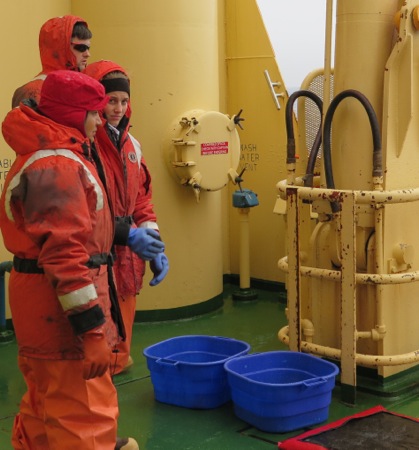
South Georgia is working very hard to restore the ecological integrity of the Islands, which is why they hired Graham. While ashore, he also monitors the installation of the GPSA Global Positioning System (GPS) is a satellite-based navigation system used to track the location or position of objects on the Earth’s surface. units. Many of the nesting birds on South Georgia actually build burrows, and it was Graham's job to make sure that we were as conscientious as possible when ashore to protect the diversity of the indigenous species.
The day ended with a tour of the galley stores. I have gotten quite a few questions about food, what we eat and how much food we have. Well here it is, a plethora of food stores. Which is also the reason why I think everyone is gaining weight.
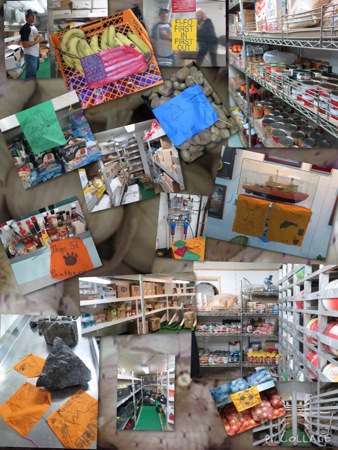
Caption this
Okay everyone, give me a great caption for this elephant seal and win a penguin magnet.



Comments